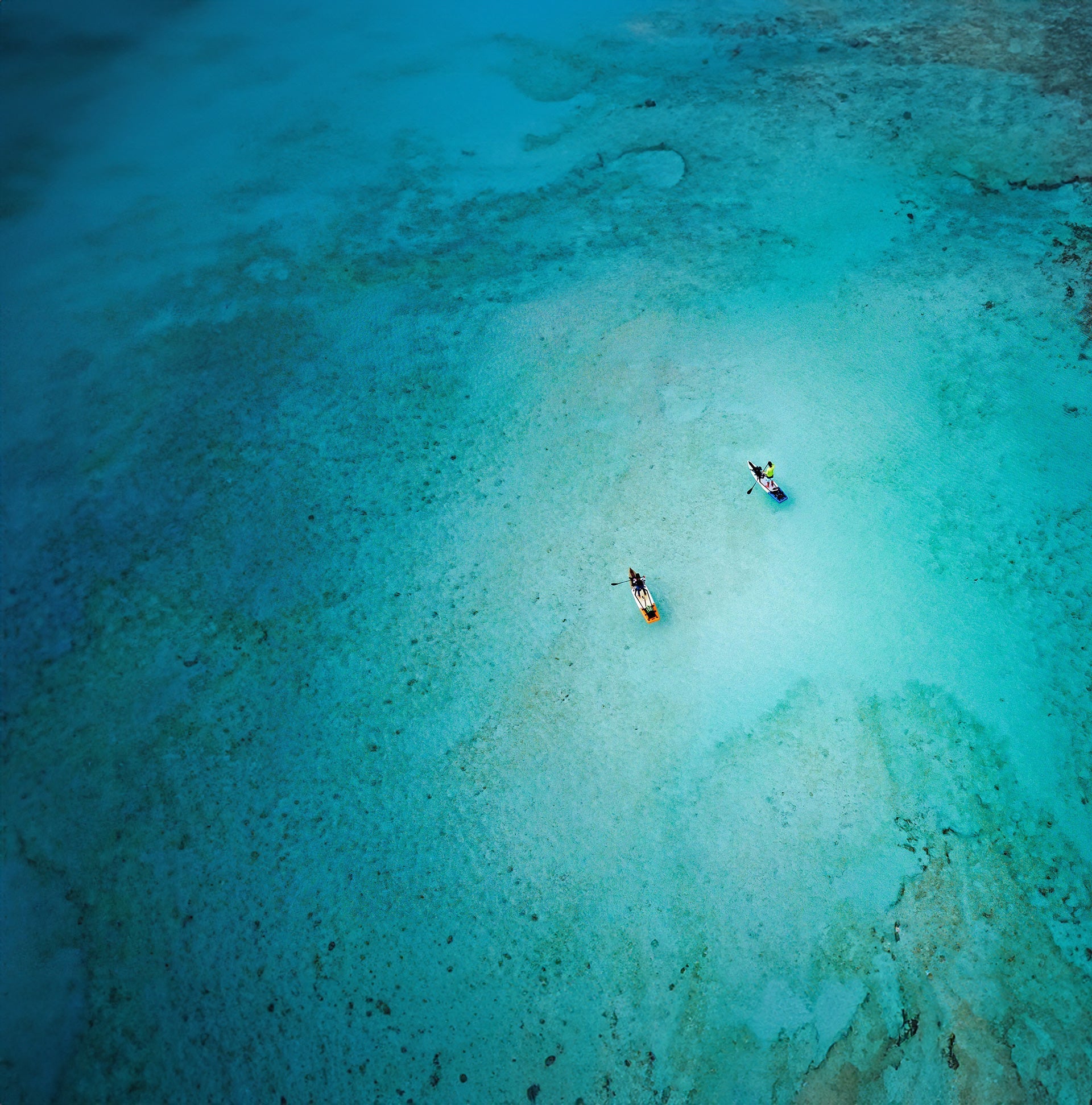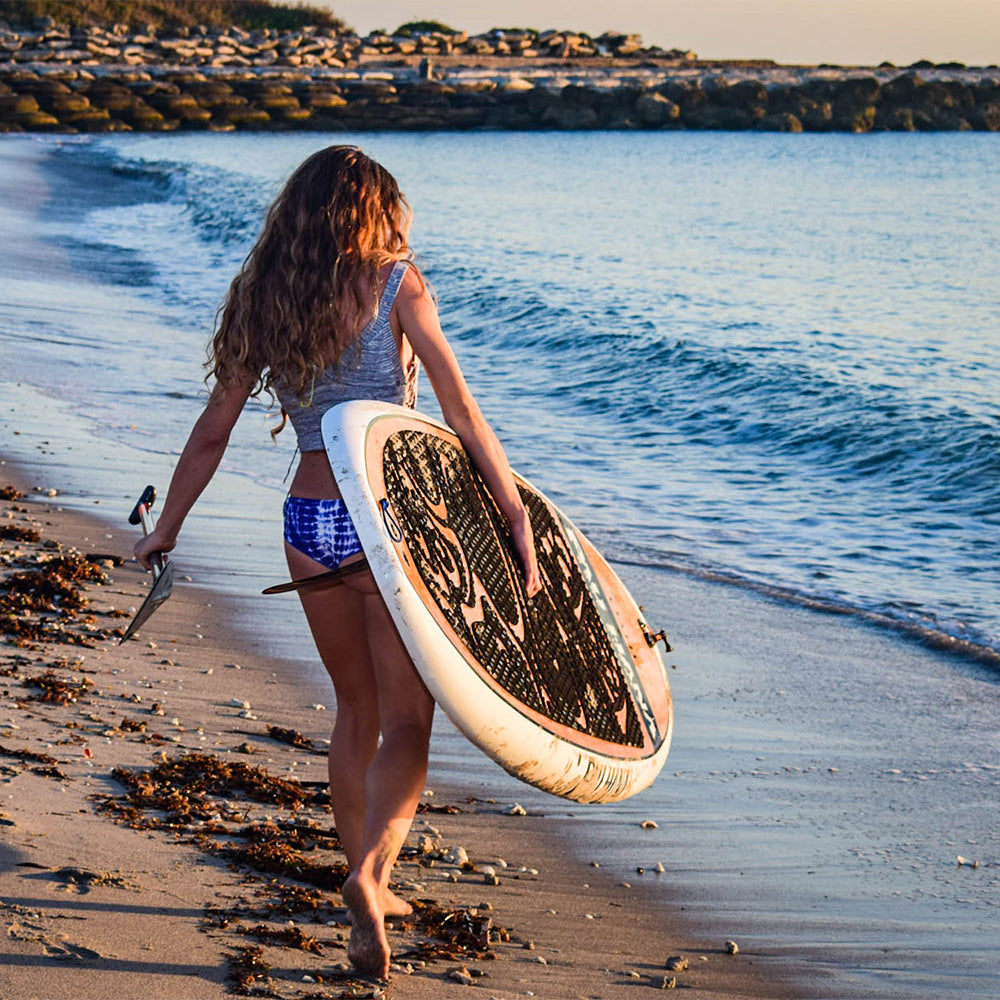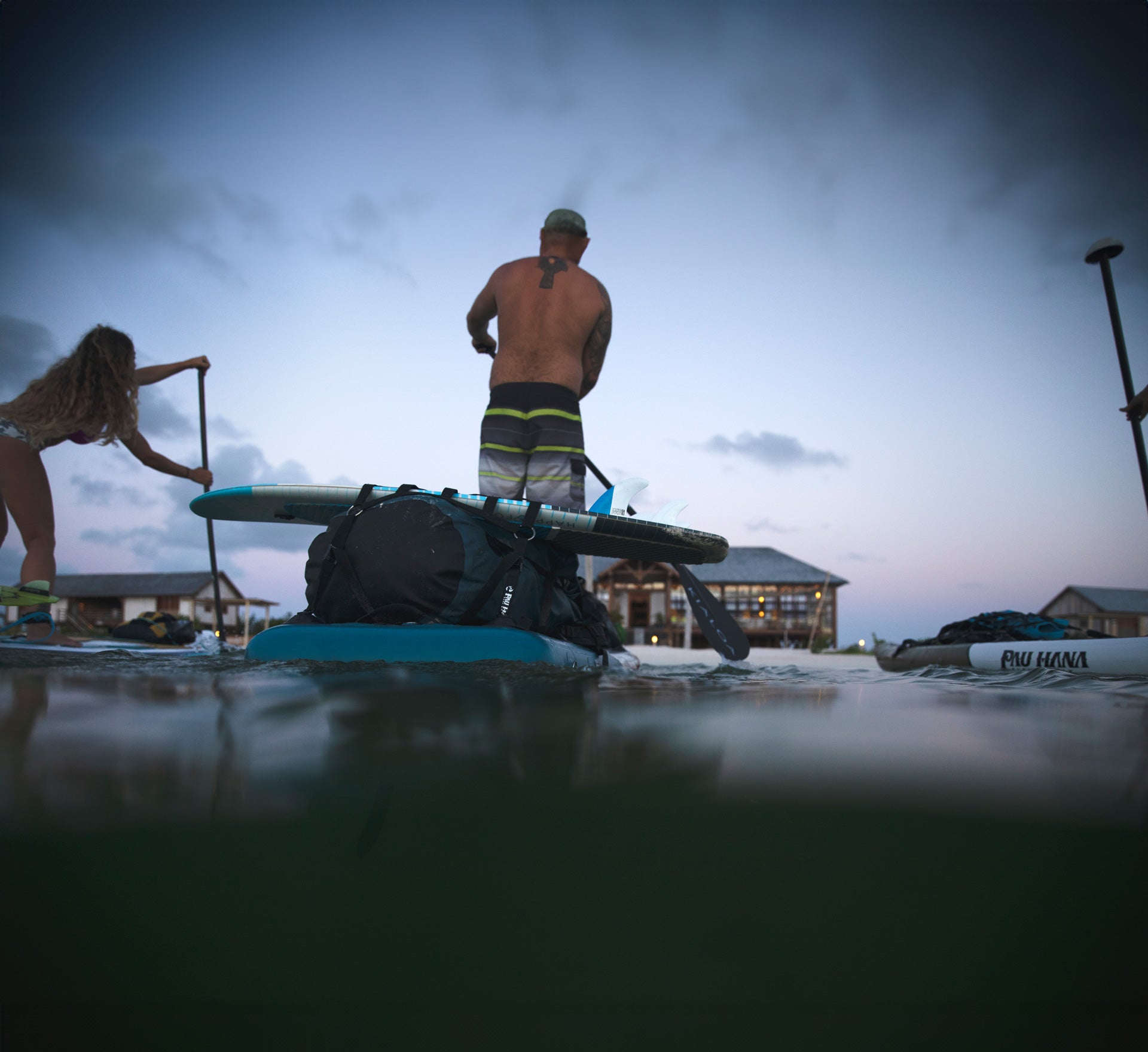BUILDING YOUR CORE STRENGTH IS THE FOUNDATION FOR PROGRESSING IN PADDLESPORT
Having a strong core is the key to having great balance, which will undoubtedly help your paddling performance. And while getting out on your paddleboard is a great way to keep your core trained there are also a few workouts you can do from home to give you that extra edge when you next hit the water. These workouts can be done from anywhere - home, hotel, park or backyard and with minimal equipment so there’s no excuse not to add them into your day!
If you are a seasoned gym bunny then you should already have some knowledge on keeping good form throughout the exercises you do. If you’ve never been to the gym before we recommend talking to someone who has a personal trainer or looking up the correct techniques on YouTube before committing to the workout.
These workouts are designed for the beginner but can be tailored to suit any fitness level. The sets we recommend can be tailored to you, you should be working until it hurts, so if you get to the end of a set and you're not praying for the workout to be over then add some more reps in. You can also add weights for a more intense workout.
Here are our top core workouts you should incorporate into your daily routine:
Increase weight, time, or use a variation of the exercise when this starts to feel easy. Use a workout book to keep track of your routine, try and be competitive with yourself and beat your previous session by more reps, weight and time on each exercise.
- Squats: 20 reps.
- Plank: 30 sec hold (increase the time as you get stronger)
- Russian Twists: 20 reps.
- Cross Body Crunches: 20 reps.
- Reverse Crunches: 20 reps.
Give yourself 15 seconds rest between each exercise.
Repeat the circuit twice if you are a beginner, 3 times if you are used to core workouts and 4 times if you want a challenge.
SQUATS
Squats are a great workout for the whole body, and while most people think they are designed to attack the legs they are actually a great core workout too. Squats are simply one of the best land exercises for improving your paddle boarding.
Stand with your feet shoulder width apart and keep your back straight throughout the whole move. Bring your hands to a prayer position in front of you and squat down as low as you can go, then return to the starting position.
If you want to ramp up the squats you can try:
One legged squats – Here you start with your feet in a normal standing position, raise one leg 90º in front of you ( you can bend the knee if you are not that flexible ). Squat down as low as you can go.
Jump Squats – These are a more explosive version of squats. Start as you were doing normal squats, but when you reach the squatted position, jump up as high as you can and release your hands. For another variation of jump squats you can find a solid box, or small wall and as you jump up, jump forwards onto the box or wall.

PLANKS
Planks are a really intense core workout, in fact they not only attack the core but also the back, chest, shoulders and neck. Plank can be done anywhere without any equipment and they help us improve our posture and help with our paddling technique. Sounds good right?
For a basic plank position, start lying face down on the ground or yoga mat with your elbows bent under your shoulders and palms flat on the floor. Your feet should be shoulder width apart and toes curled under to make purchase with the floor or mat. Press up through your forearms and engage your abs - you should feel, well, like your body is a plank straight and tight, you should not have pain in your back or be bending through the back. Try and hold this position for 30 seconds.
Plank variations:
Straight-arm plank – You are in the same position as a regular plank but arms are straight and palms are on the floor. This adds in shoulder stabilisation to the move.
Side plank – For this variation you will start in the straight arm plank, raise one arm off the floor and reach it towards the ceiling or sky, stack the feet on top of each other and again engage the core. You will feel the burn in your obliques on this one.

Russian Twists
Russian twists are a great way to tone your core and build strength. They are also a standard exercise for canoe paddlers and kayakers as it attacks those muscles they use when sitting down and twisting - These muscles are also important for paddle boarding!
For the basic Russian Twist position start sat on the floor with legs bent and soles of the feet flat on the floor. Lean back so your body is at 45º angle to the floor. It’s important to keep your back straight at this angle and engage the core through the whole movement. Hold your hands together and rotate your torso from one side to the other so you can almost touch the ground on each side.
Russian twist variations:
Elevated Russian Twists - Start in exactly the same position as the regular Russian Twist but lift your legs off the floor for the entire move.
Weighted Russian Twists – This is the same move as the elevated Russian Twists but this time you’ll want to hold a weight in your hands. If you have dumbbells or kettlebells at home you can use these, if not you can find a rock out of the garden or fill an empty milk carton up with water.
Cross body crunches
Lets face it no core workout would be complete without some form of crunches. Cross body crunches target both the upper and lower abs muscles and the oblique’s. It’s important with any crunch exercises to fully engage the core and not pull on the neck with your hands, if you're doing it right, by the end of the set your abs will feel like they are on fire.
Start by lying on your back on the floor with the soles of your feet on the floor and knees bent. Hands should be behind the head or touching the ears. Engage the core and move your right elbow over your body towards your left knee, simultaneously move your left knee towards your right elbow so they meet in the middle. Return to the start position and repeat on the opposite side. Remember to keep your core tight and engaged throughout the move and not to pull on the neck with your hands.

Reverse Crunches
Reverse crunches target the lower abs and hip flexor muscles. They are great exercises for strengthening the core and reducing lower back pain, which are a great exercise for stand up paddlers.
To do reverse crunches, start by lying on your back on the floor, arms by the side of your body and palms flat on the floor. Keeping the feet together and raise the legs off the floor keeping the knees bent until they are at a 90º angle to your body. From here you are going to lift your hips off the floor and push your feet towards the ceiling or sky as high as you can. Lower the hips back to the ground but keeping the legs at 90º in the air. Repeat the movement without dropping your legs to the ground. You should start to feel a deep burn across the abs by the end of the set.
By Jen Chrimes









